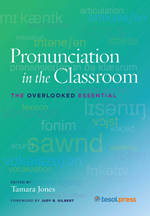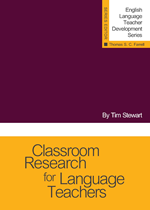Quick Tip: 5 Tips for Successful Icebreakers
by Walton Burns
Audience: ESL or EFL teachers at all levels
You probably do an icebreaker on the first day of class. They’re great for getting to know your students and helping them to get to know each other. An exciting getting-to-know-you game is also a fun way to start off the class. But a bad icebreaker can devolve into the students chatting all through class or revealing more than they intended about themselves. Here are five simple tips to help your icebreaker go well.
1. Keep It Simple
Students are stressed out on the first day of class. They’re absorbing a lot of new information and thinking about their workload for the term. They’re also feeling out you and your teaching style. Some students may have trouble understanding your speech at first, so an overly complicated activity is only going to add to the stress. If your students need to choose their favorite 18th century novel, look up the color of their shirt on a chart, and then plot the position of the stars with a sextant, you might need to simplify the activity.
Unless your students are very advanced, an icebreaker should focus on concrete, immediate, and personal information, such as where they are from or who the tallest student in the class is. Students shouldn’t have to think too hard about what they’re going to say. A simple icebreaker should also have a minimum of steps. Most take the basic three-step form: Ask, Answer, Report. Finally, each step should be short and clear so that it can be easily understood, and easily written on the board.
2. Keep It Moving
As with any activity, set time limits. Many icebreakers involve students talking in pairs or small groups. That can lead to some small talk, which is a great way to get them bonding. But if you let them, your students will probably chat all class long rather than moving on to work. And it’s not a bad idea to leave them with something to talk about outside of class, too. One of my best first days ended with all the students going out to lunch together to continue their small talk from the opening activity.
3. Keep It Respectful
Students reveal personal information in getting-to-know-you activities. Make sure that other students are respectful. Shut down any disrespectful comments, whether intentional or accidental, quickly to show that your class is a safe place. Actually, icebreakers are a good chance to teach students what is appropriate to say about other people or share about themselves. I remember a Russian student proudly announcing that her partner looked very healthy because she had gained a lot of weight. She had no idea why anyone would be upset that they gained weight!
4. Keep It for Day Two?
Some teachers prefer to do the ice breakers and team builders on the second day. Instead, they use the first day to do testing or jump into the content of the class right away. If you are doing testing, the first day is probably the best day for it (although you can probably fit in a quick icebreaker, too). If you start teaching from day one, students walk away feeling they have accomplished something.
5. Keep Doing Them
Students will continue to get to know you and each other throughout the year. Their lives will change, as will their interests and expectations from the class. So don’t limit your use of getting-to-know-you activities to the beginning of the academic year. Pull out an icebreaker every now and again and keep the rapport going.
Walton Burns is a teacher and award-winning materials writer from Connecticut who began his career teaching in the South Pacific and then moved to Kazakhstan. He is the chair of the Materials Writers Interest Section, and his latest book is 50 Activities for the First Day of School.
TESOL Blogs
Interested in writing a blog for TESOL?
Read the submission guidelines and send us your post!
Check out the latest TESOL Blogs:
|
Teaching Empathy to Children Through Storytelling, by Judie Haynes
 As English learners enter school this year, one of our most important jobs as teachers is to help them adjust to the American classroom. It is important to make our ELs feel welcome and accepted. With all of the anti-immigrant and refugee rhetoric that children are hearing in the news, teachers have a genuine opportunity to address the issue around immigration and build empathy. One way to do this is to design lessons around students’ stories about their cultural heritage. These lessons should not only be told by immigrants and refugees but for all of the students in the classroom. Here are a few ideas of how students can share their stories, and a few lesson ideas that are inclusive of all students. Read More. As English learners enter school this year, one of our most important jobs as teachers is to help them adjust to the American classroom. It is important to make our ELs feel welcome and accepted. With all of the anti-immigrant and refugee rhetoric that children are hearing in the news, teachers have a genuine opportunity to address the issue around immigration and build empathy. One way to do this is to design lessons around students’ stories about their cultural heritage. These lessons should not only be told by immigrants and refugees but for all of the students in the classroom. Here are a few ideas of how students can share their stories, and a few lesson ideas that are inclusive of all students. Read More.
|
|
Starting the School Year With Strong Classroom Management, by Nathan Hall
 Two months ago, we were counting down the days until the school year ended, and now we’re counting down the days until the next one begins. We should have a good idea of what our curriculum will cover, how to assess new students’ progress and returning students’ abilities at the next level, and what materials we’ll need to get us through the first week’s lessons. Probably the last thing we’re thinking about is how we will manage the students, especially since we don’t know either what the new students will be like or how well the familiar ones matured. Read More. Two months ago, we were counting down the days until the school year ended, and now we’re counting down the days until the next one begins. We should have a good idea of what our curriculum will cover, how to assess new students’ progress and returning students’ abilities at the next level, and what materials we’ll need to get us through the first week’s lessons. Probably the last thing we’re thinking about is how we will manage the students, especially since we don’t know either what the new students will be like or how well the familiar ones matured. Read More.
|
|
ESP Project Leader Profile: Prithvi Shrestha, by Kevin Knight
 Hello, ESPers worldwide! Hello, ESPers worldwide!
It is my privilege to be able to introduce to you Dr. Prithvi Shrestha, who has worked closely with the TESOL ESPIS over the years in his role as a leader of the IATEFL ESP Special Interest Group. In his profile, he shares information about a project in Bangladesh involving training for 80,000 English language teachers that has become a model for projects in Pakistan and India. Read More. |
|
ESOL and Healthy Communities, by Robert Sheppard
 What makes a “healthy community”? When I first heard the phrase, I pictured UnderArmour-clad model-bodied suburbanites jogging to Equinox past Trader Joe’s, Sweetgreen, and BeGood, scarcely breaking a sweat. But perhaps that says more about unhealthy consumerism than about healthy communities. According to the U.S. Department of Health and Human Services, a healthy community is “one that continuously creates and improves both its physical and social environments, helping people to support one another in aspects of daily life and to develop to their fullest potential” (2010). Read More. What makes a “healthy community”? When I first heard the phrase, I pictured UnderArmour-clad model-bodied suburbanites jogging to Equinox past Trader Joe’s, Sweetgreen, and BeGood, scarcely breaking a sweat. But perhaps that says more about unhealthy consumerism than about healthy communities. According to the U.S. Department of Health and Human Services, a healthy community is “one that continuously creates and improves both its physical and social environments, helping people to support one another in aspects of daily life and to develop to their fullest potential” (2010). Read More.
|
TESOL Bookstore

Featured Resources from TESOL Press
 Pronunciation in the Classroom: The Overlooked Essential
Pronunciation in the Classroom: The Overlooked Essential
Tamara Jones, Editor
This indispensable handbook shows you how to incorporate pronunciation seamlessly into your lesson plans and explains the essential elements you need to know to help your students better communicate, no matter what subject you teach.
 Fostering International Student Success in Higher Education
Fostering International Student Success in Higher Education
Shawna Shapiro, Raichle Farrelly, and Zuzana Tomaš
This book enlightens college faculty and TAs to some of the international students' needs using quotes, anecdotes, and reflection questions as well as specific strategies, resources, and activities that serve as tools for responding to common instructional challenges.
 Classroom Research for Language Teachers
Classroom Research for Language Teachers
Tim Stewart
This easy-to-follow guide demystifies the process of classroom research and gives teachers the confidence to get started, plan a project, collect data, publish findings, and then continue to enjoy the empowering energy of researching and learning.